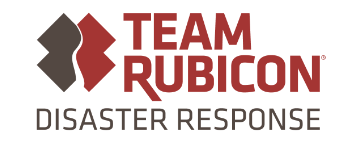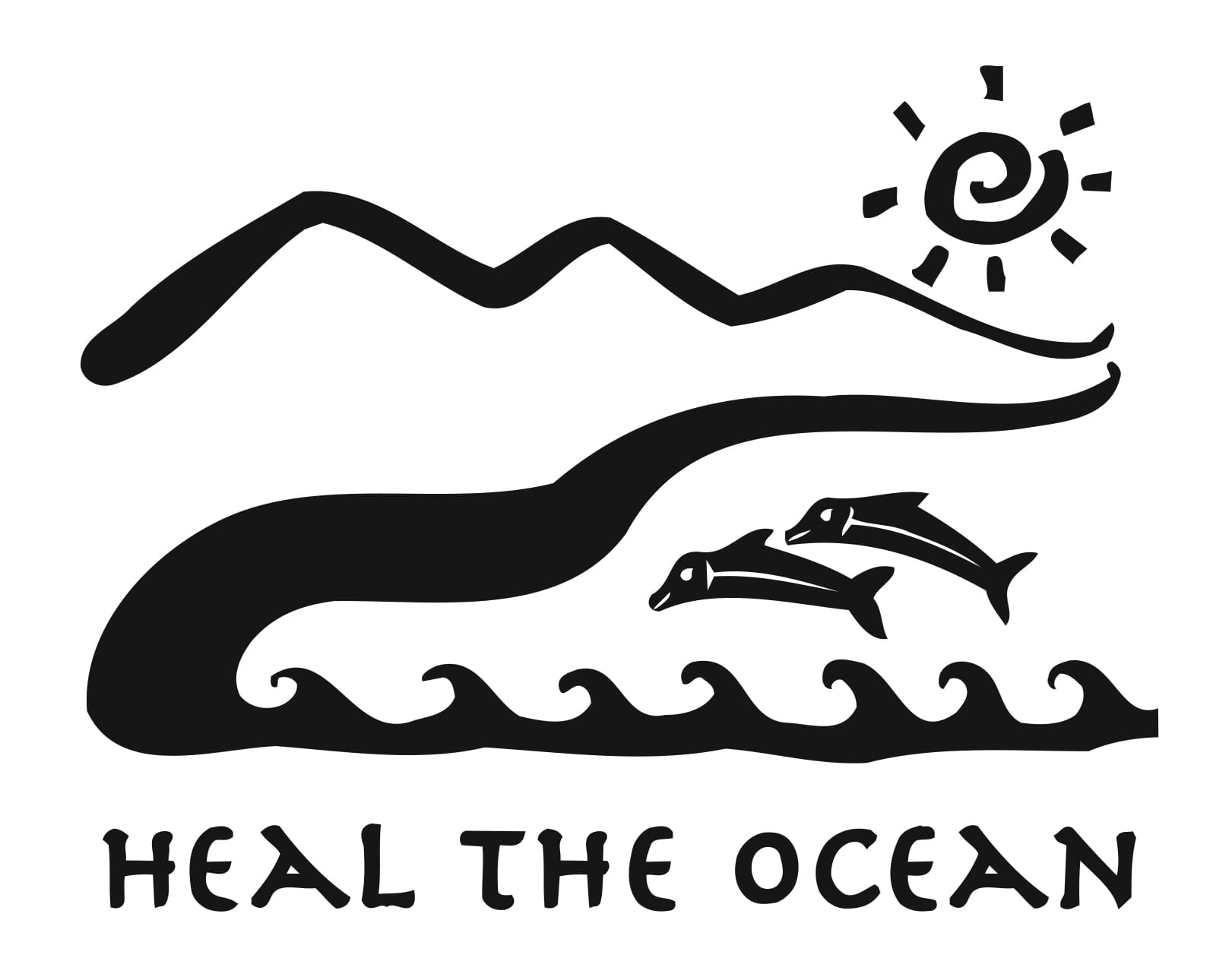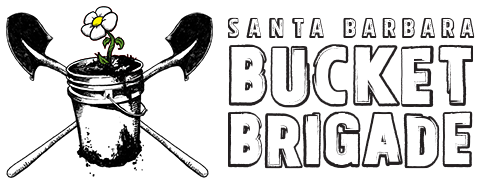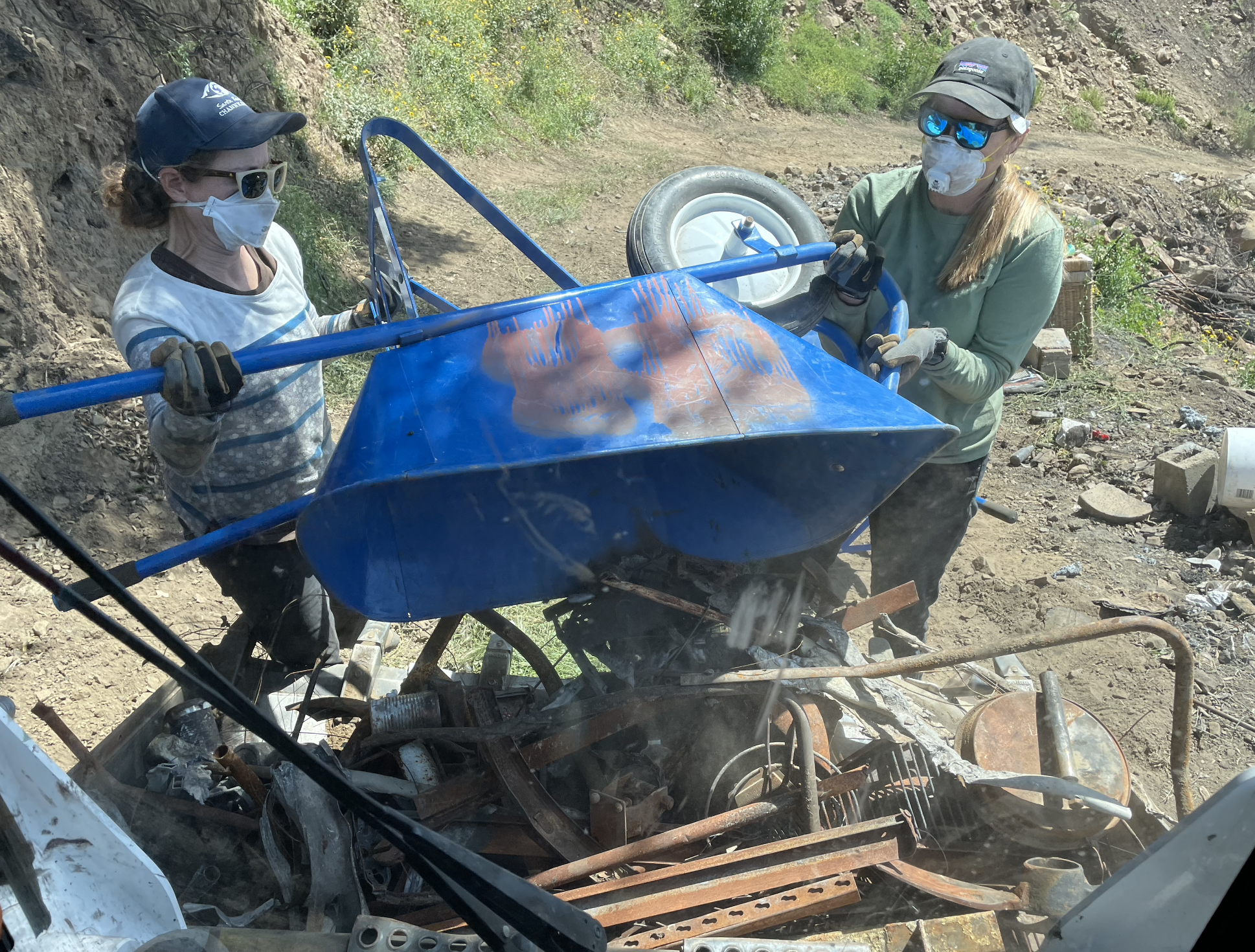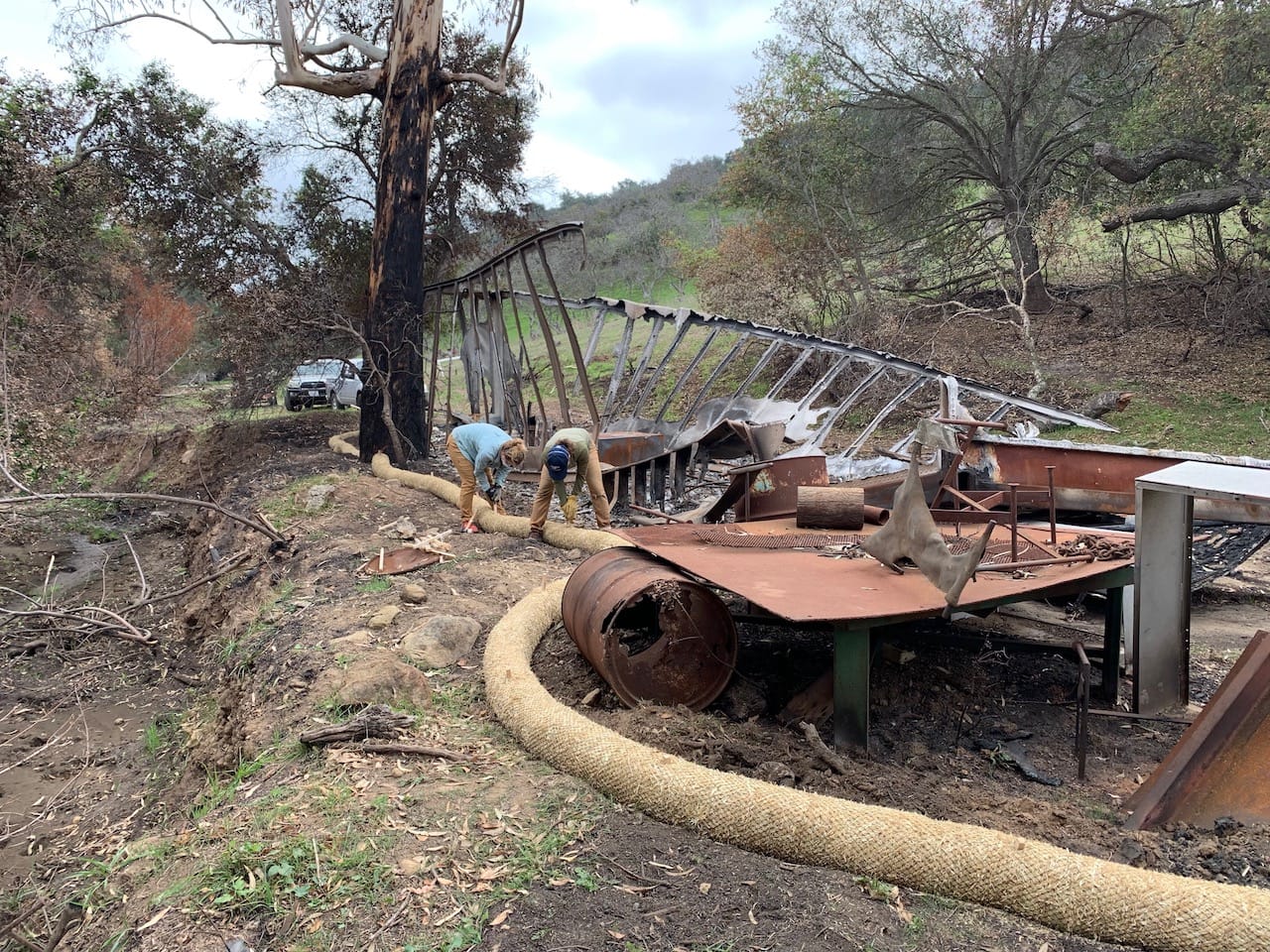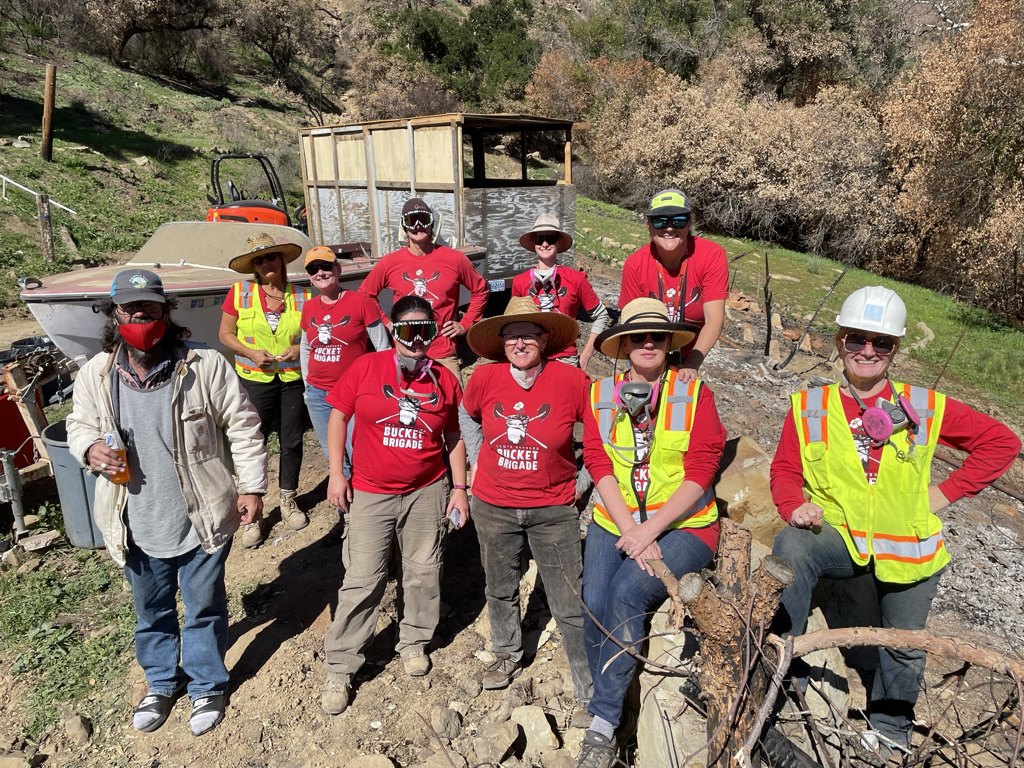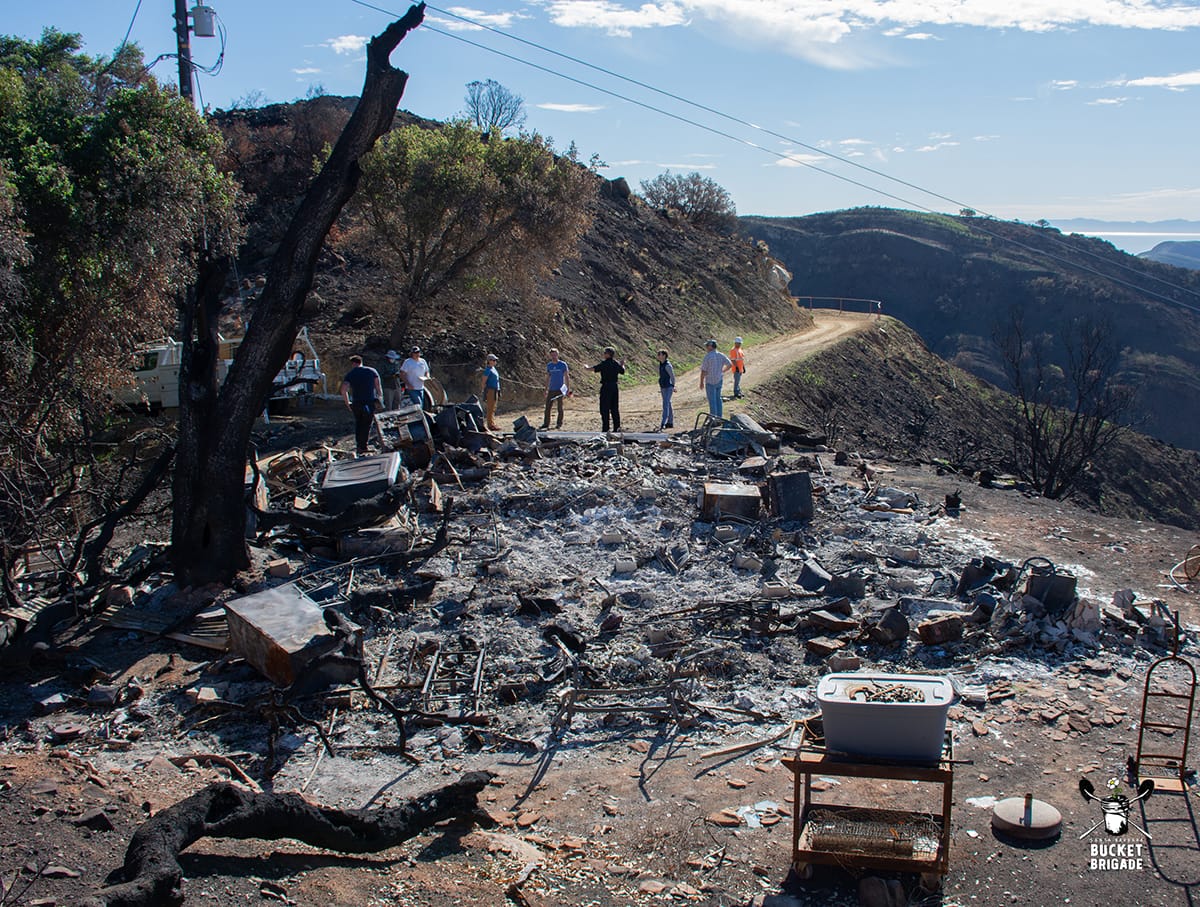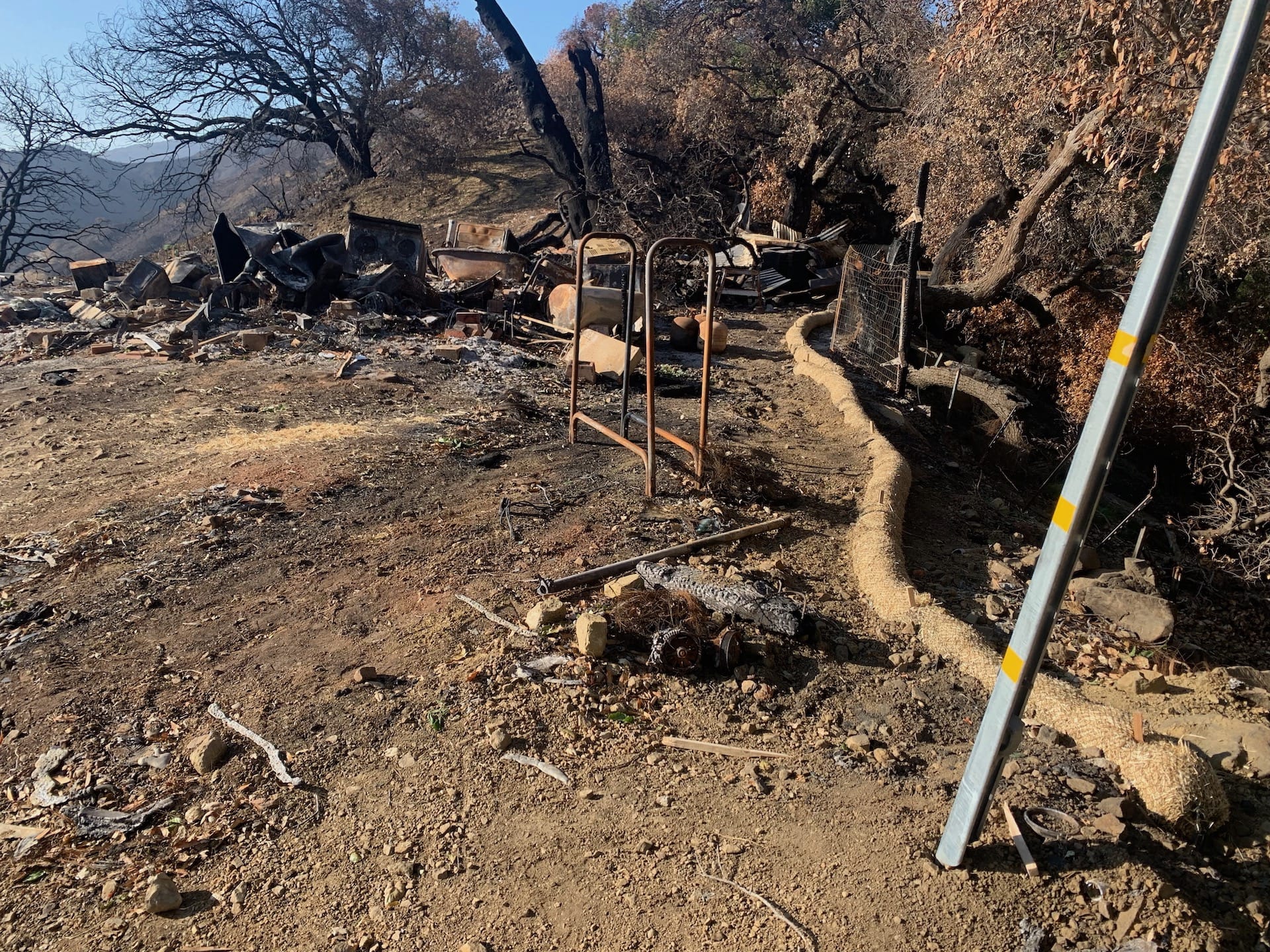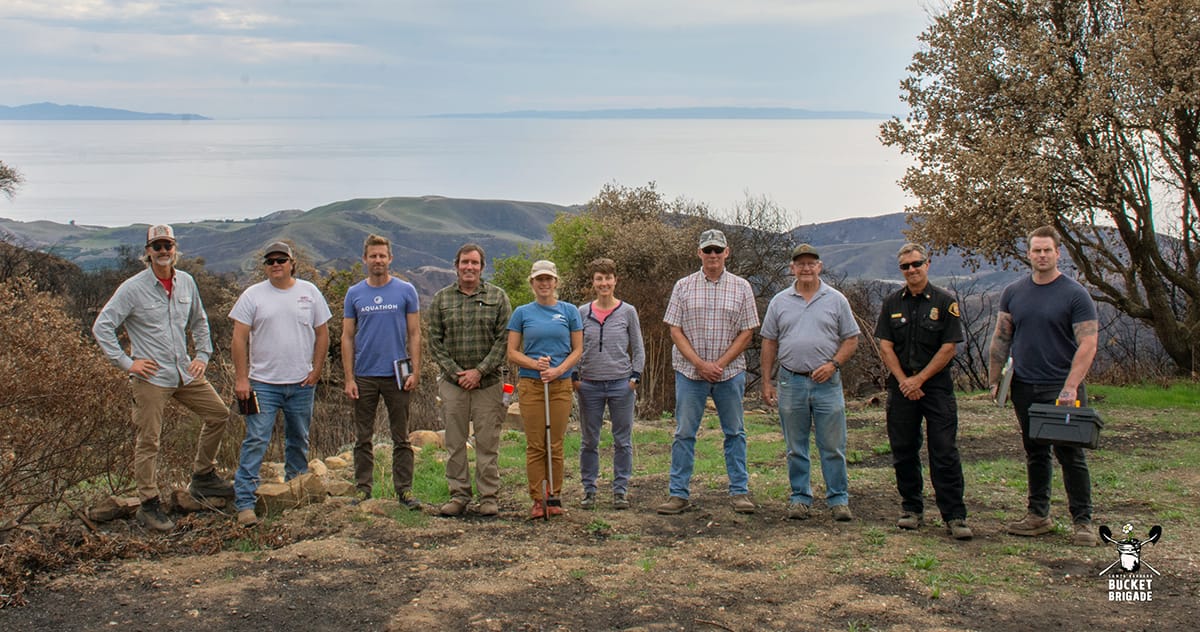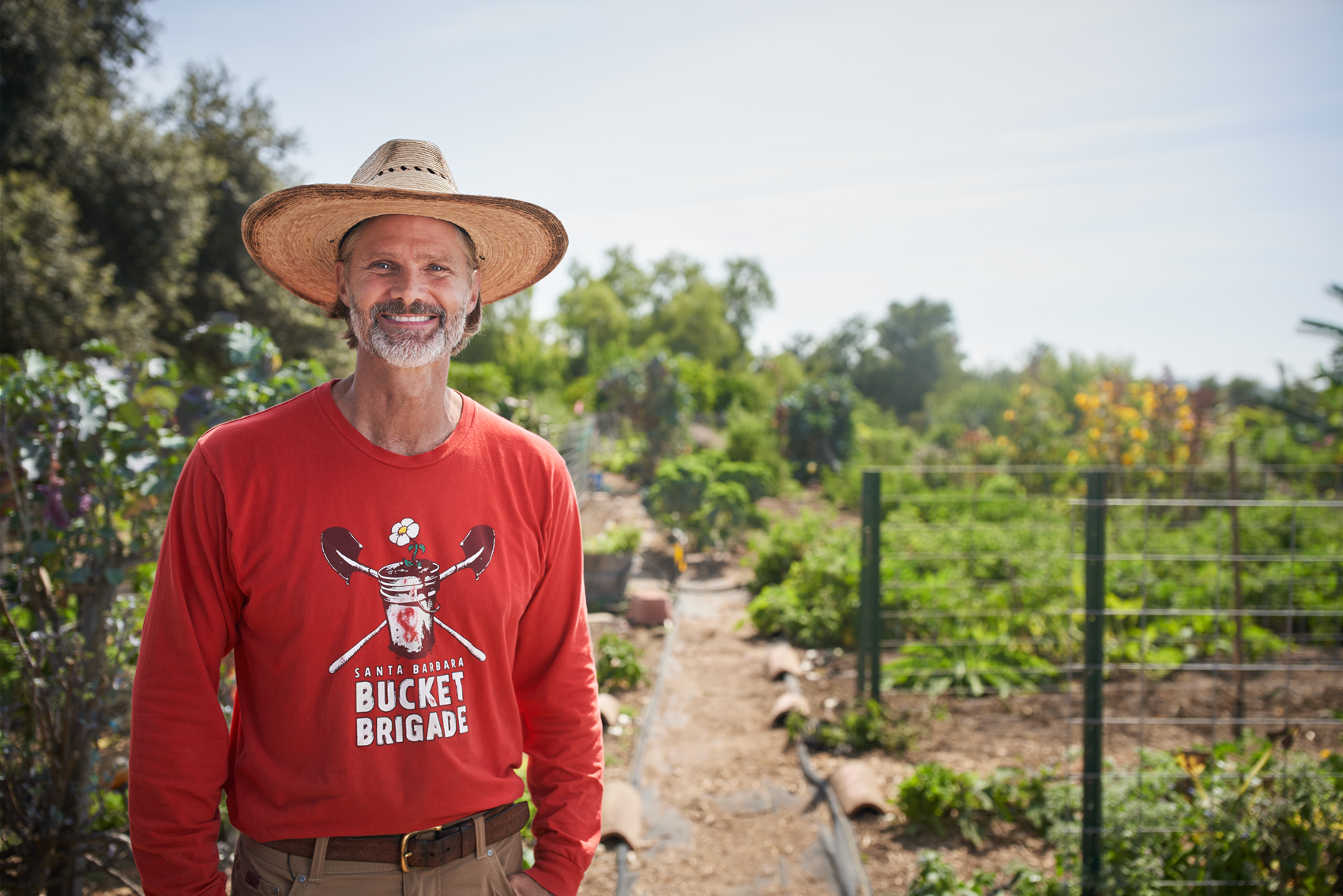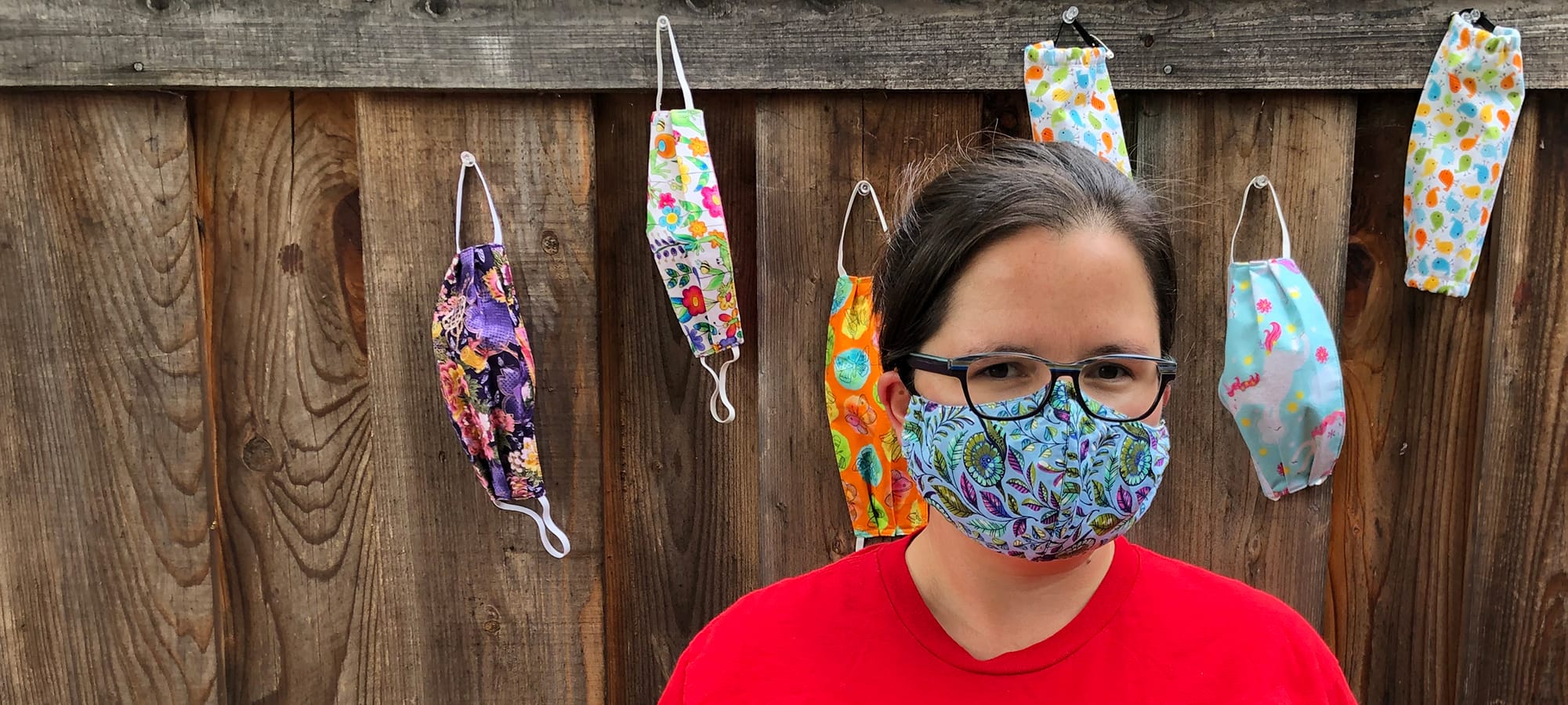BUCKET BRIGADE HUMANITARIAN GARDEN
Alisal Fire Assistance Project
Alisal Fire Assistance Project
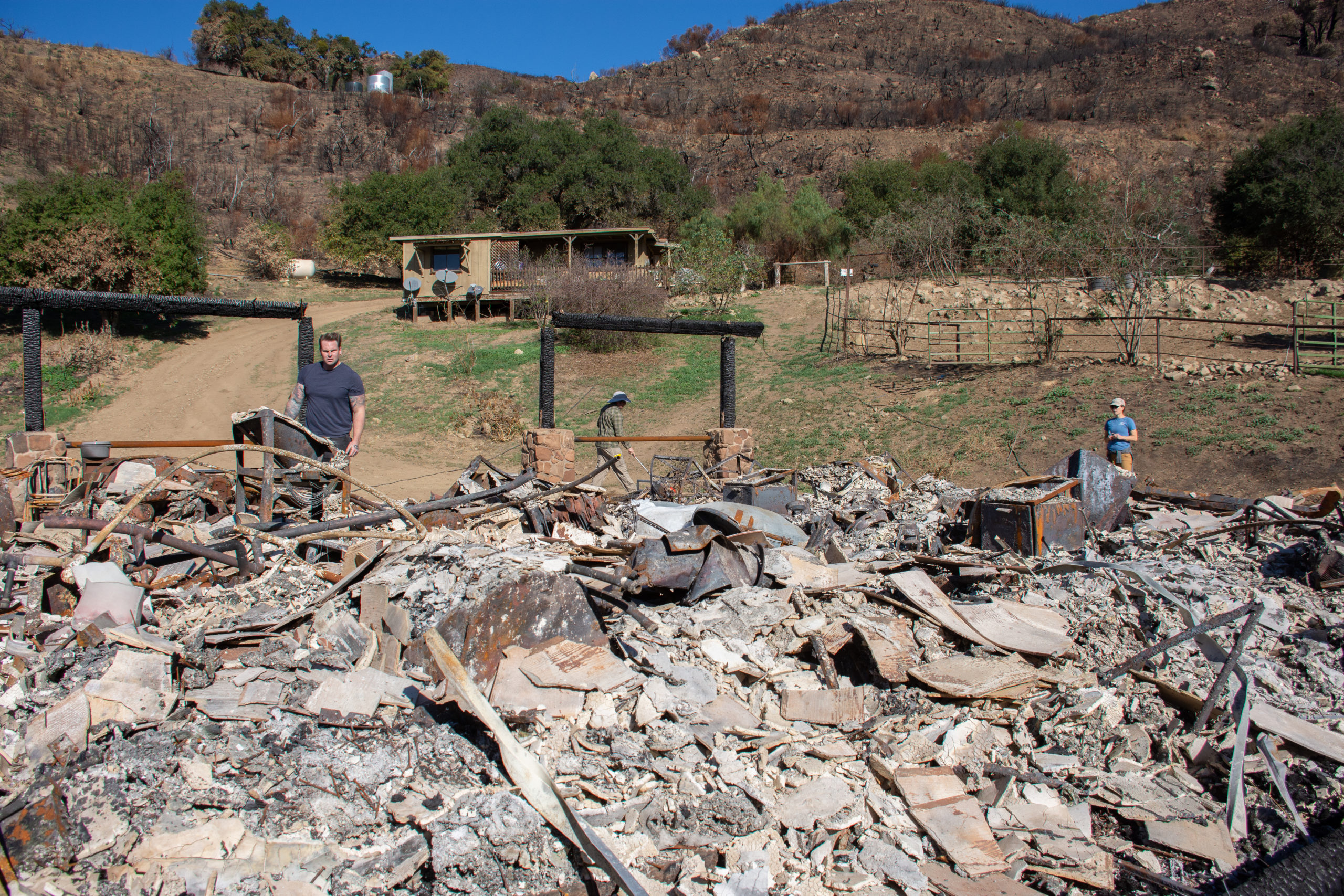
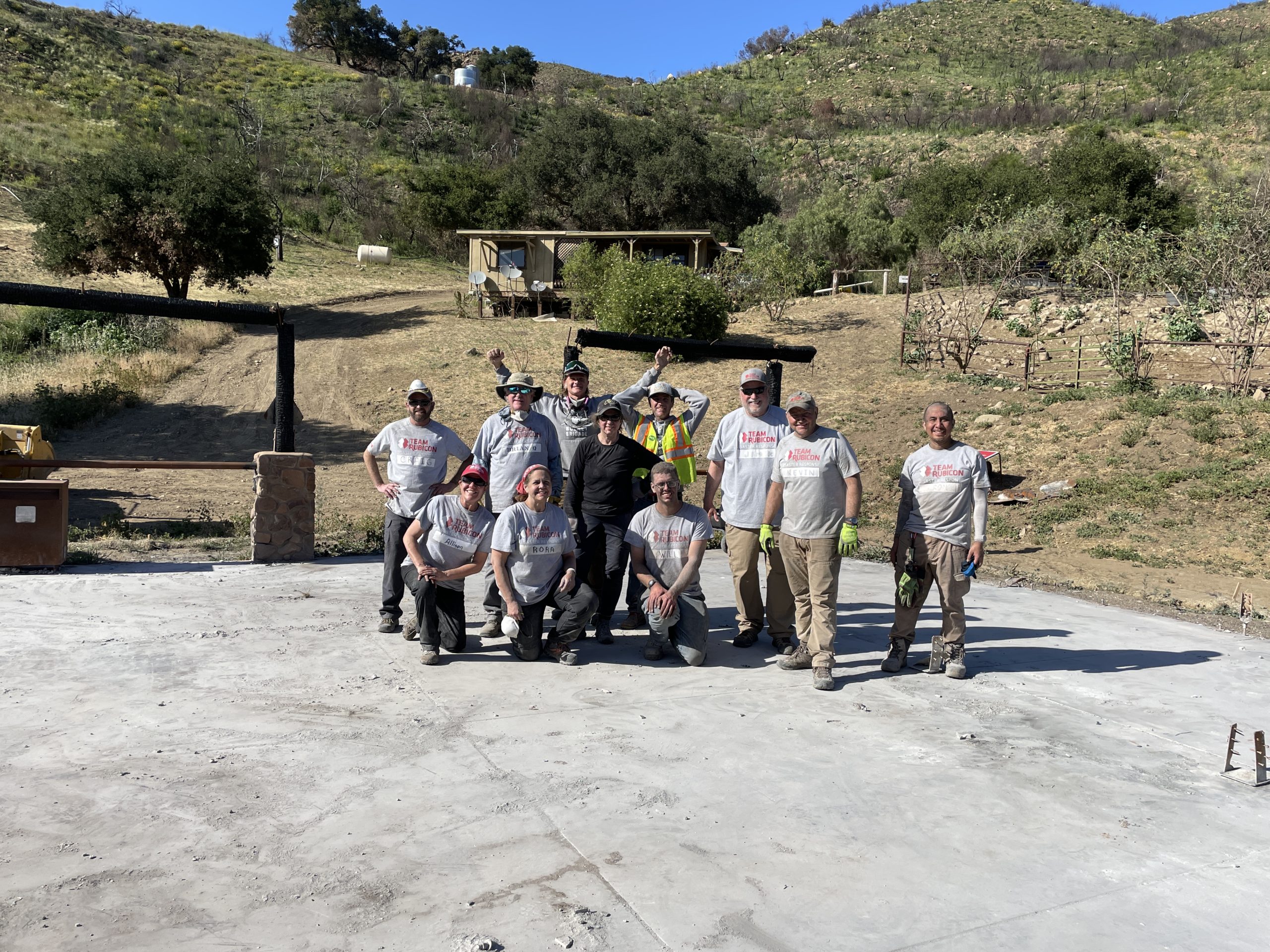

AFAP: By The Numbers
Total Debris Removed: 163,627 lbs | Burn Sites Cleared: 11 | Volunteers Deployed: 45
Lowest Competitive Bid for Cleanup: $150,000 | Actual Cost of AFAP: $63,500
On October 11, 2021, the Alisal Fire burned 16,970 acres and 13 structures in Gaviota, California. In this new era of megafires, the Alisal Fire was deemed too small to receive a state or federal disaster declaration so the usual post-disaster public funding – grants, loans, and other resources – were not available to impacted property owners. Many of these survivors had also lost their insurance coverage after the 2017 Thomas Fire. To make matters worse, the ash and debris left in the wake of a structure fire is full of toxic materials such as: asbestos, heavy metals and dioxin. The remains left by the Alisal Fire were no different. These noxious substances were a health hazard to property owners, neighbors, and surrounding communities, as well as a pollutant to the close-by Refugio Creek and the Refugio Creek Watershed.
These uninsured survivors had been left on their own in the ash and debris of their burned homes, forced to remove thousands of pounds of contaminants without any assistance.
This is when the Bucket Brigade joined forces with a group of local community organizations including: Direct Relief, United Way of Santa Barbara County, Habitat for Humanity of Southern Santa Barbara County, Team Rubicon, Santa Barbara Channelkeeper, Heal the Ocean, Fire Safe Council of Santa Barbara County, and Community Environmental Council to create the Alisal Fire Assistance Project (AFAP).
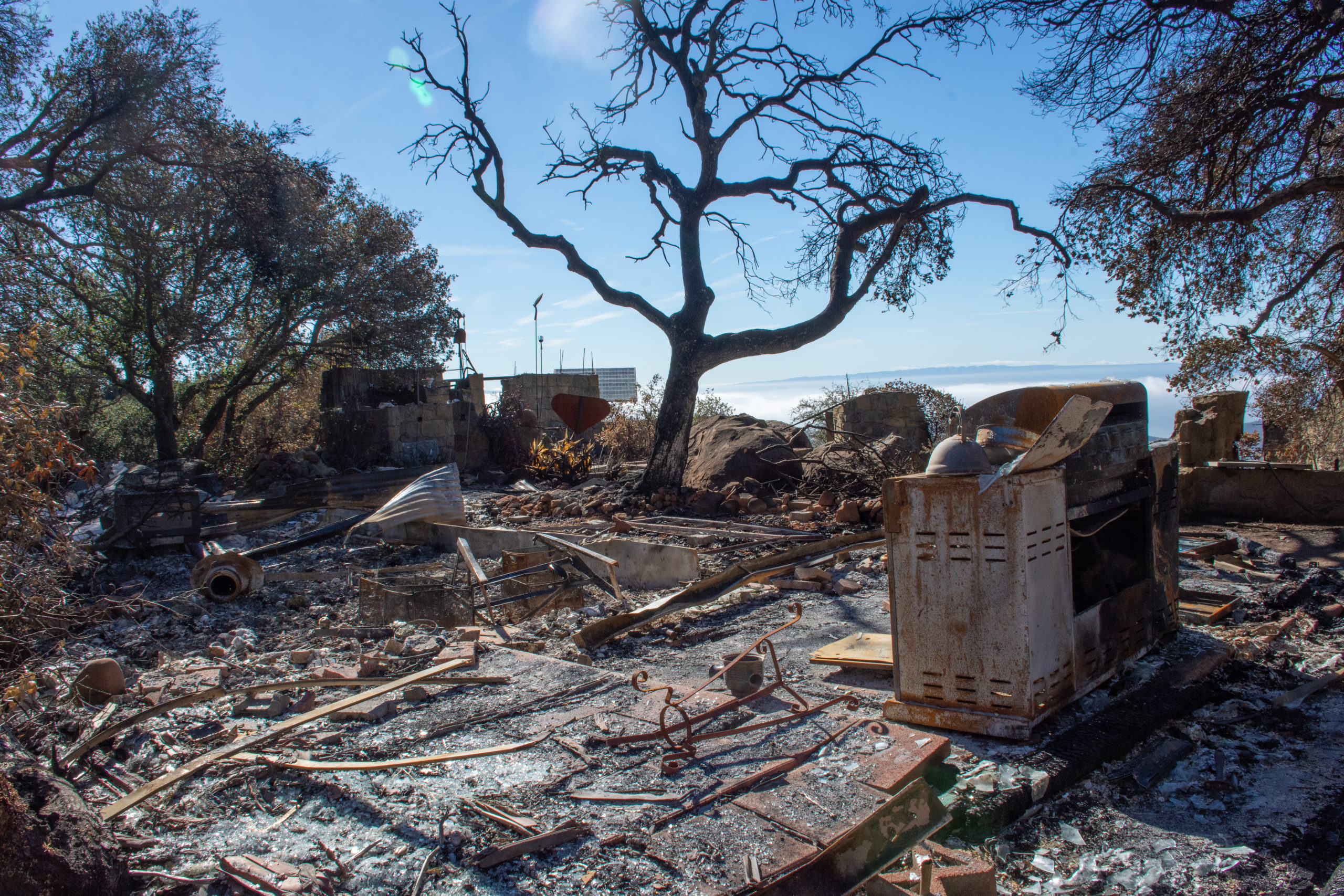
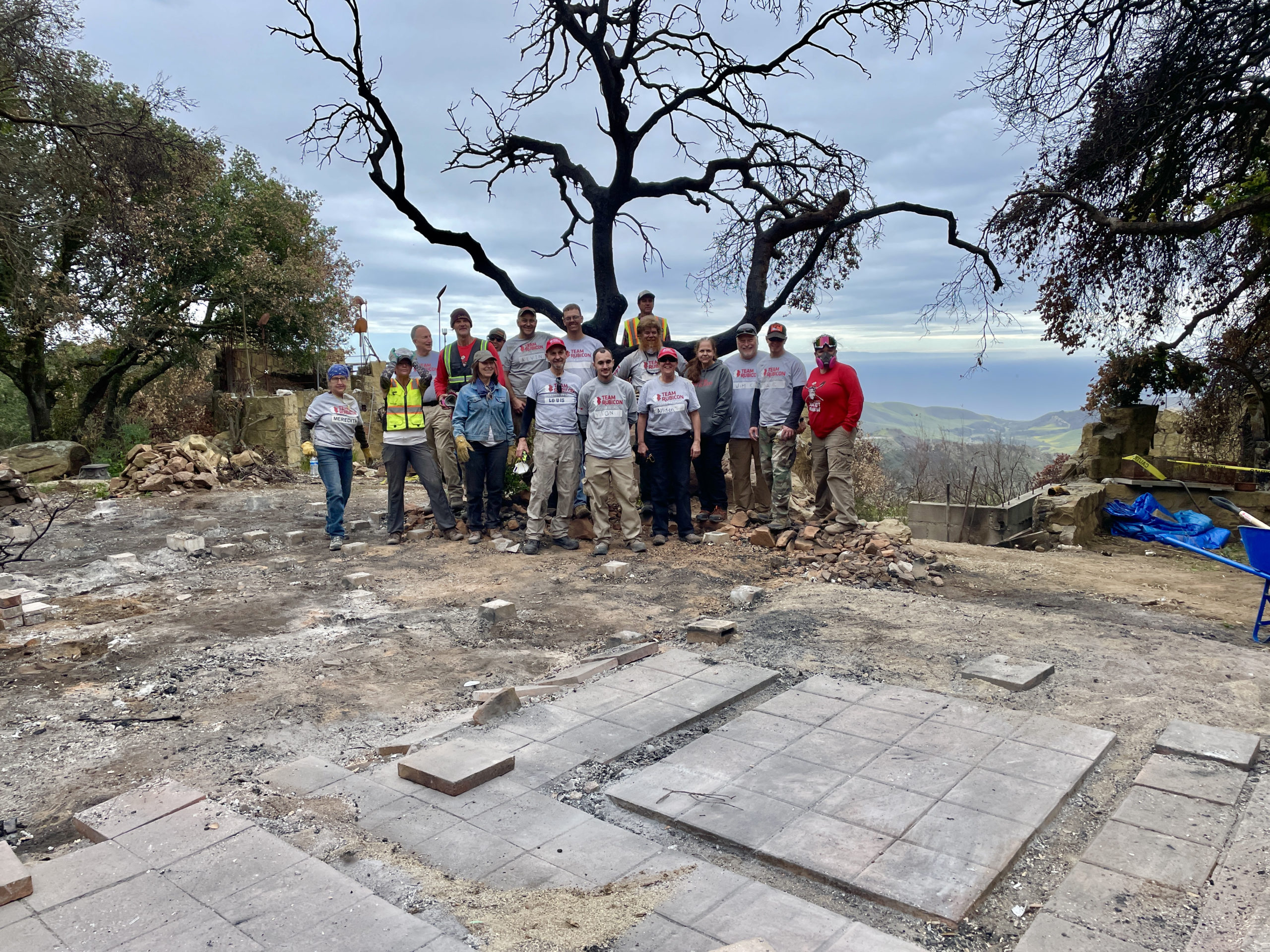

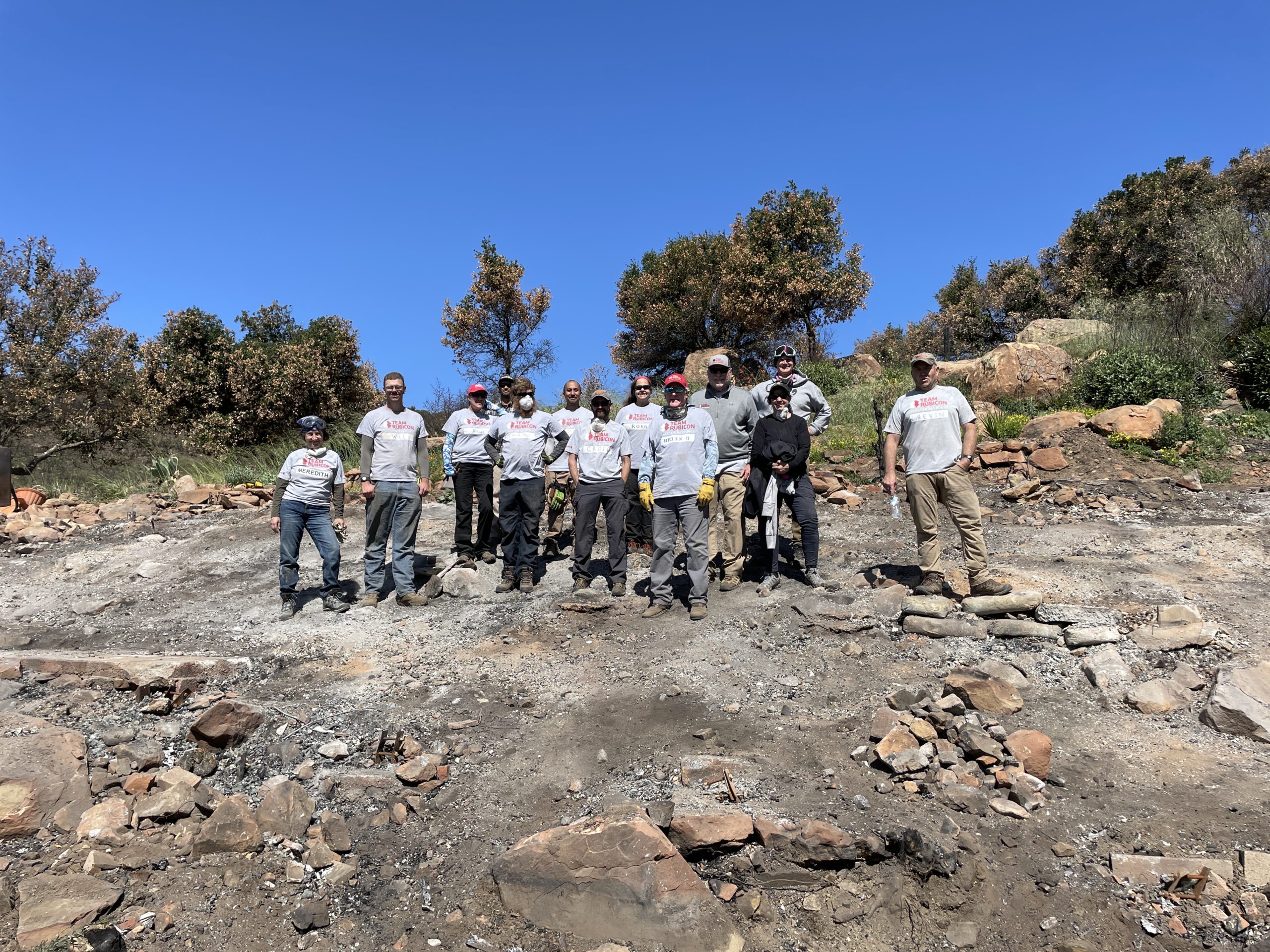
In December of 2021, Heal the Ocean and the Santa Barbara Channelkeeper worked together to install erosion control measures to contain the toxic debris before the winter storms. The Bucket Brigade and our partners conducted post-fire asbestos testing, a hazardous materials assessment, and solicited bids for the safe removal of toxic debris and ash to create a budget and a plan to clean up the mess.
In the beginning of 2022, we combined all the individual debris cleanup projects into one community relief project and began removing the toxic debris from burned structures, cars, and boats to help fire survivors recover and to protect the environment.
Now, in June of 2022, we are happy to announce that with the help of our partners and volunteers we have cleared 11 burn sites, assisting many of the survivors. This monumental collaborative effort culminated in the removal of over 160,000 lbs of debris from the Alisal Fire Burn sites.
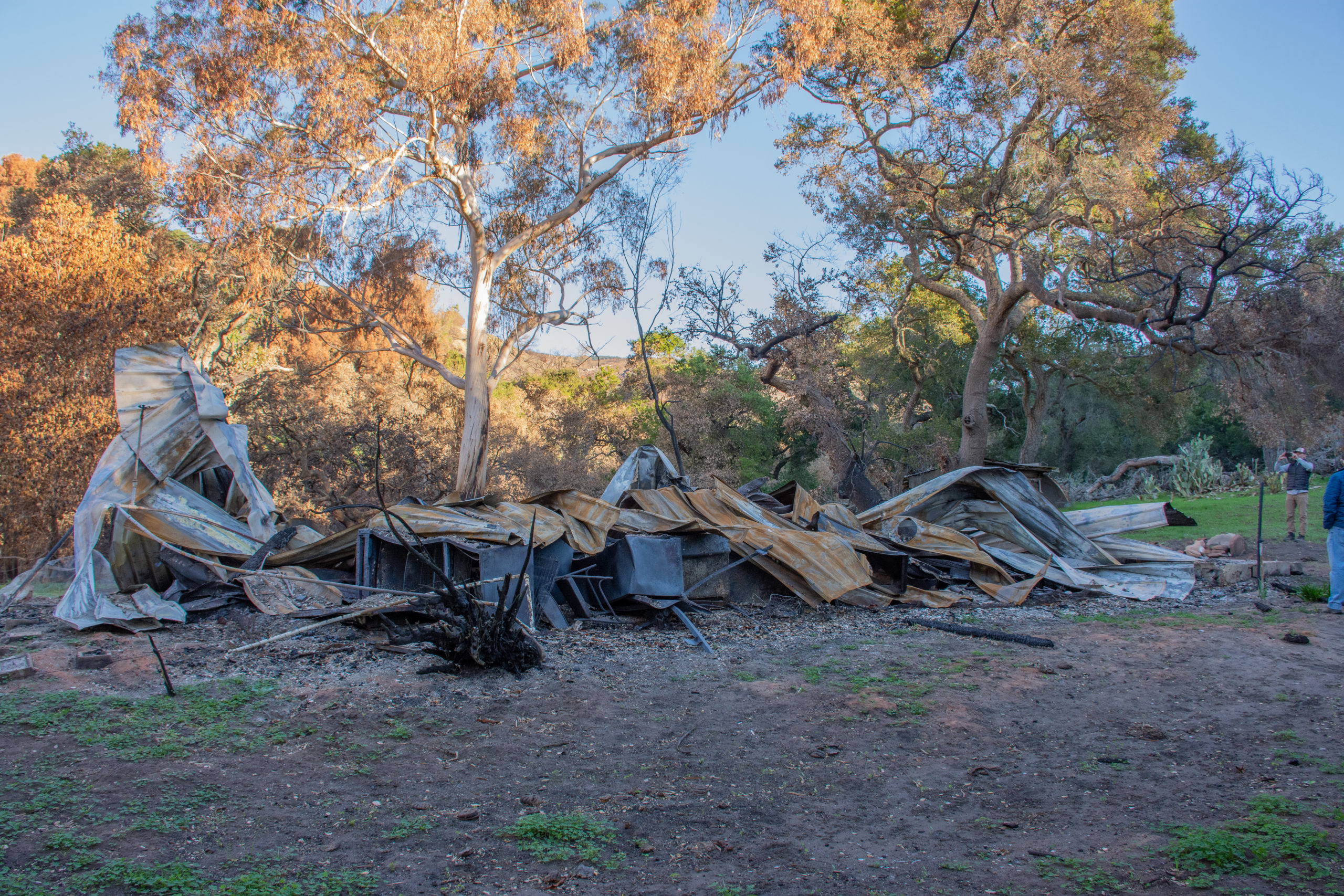

Teamwork Helps to Build a Better Safety Net in a Changed Climate.
To address the challenges of climate change and increased natural disasters, we will need to be ready to respond in new ways with new partners. The readiness and capacity of different agencies to collaborate in a crisis will be one of the key factors in the success of disaster relief efforts now and in the years to come. From the Camp Fire, Thomas Fire and debris flow to Hurricanes Maria and Katrina, we have seen how traditional response and relief systems can be overwhelmed by the scope of recent crises. As traditional relief systems are routinely overwhelmed across the country and across the globe, we are working with our partners to weave a stronger and tighter safety net. This is only possible with willing partners who are ready to think outside the box and to collaborate in new ways at scale.
The Alisal Fire Assistance Project was grueling work. It was hot, dusty, and toxic; but it was also rewarding, fun, and an example of what can be accomplished when we work together after a disaster. Community resilience looks like preventing 163,627lbs of toxic materials from entering creeks, the watershed, and the ocean; while also helping neighbors recover from a devastating event.
The most important outcome of this project was the concrete, effective demonstration of community solidarity and support in a time of need. When neighbors feel supported by their community in a time of need it builds trust, interconnectedness and strength. These are things that every community will need more than ever in the years to come.
We know this isn’t the last disaster our community will face, so we won’t get ready, we will stay ready.
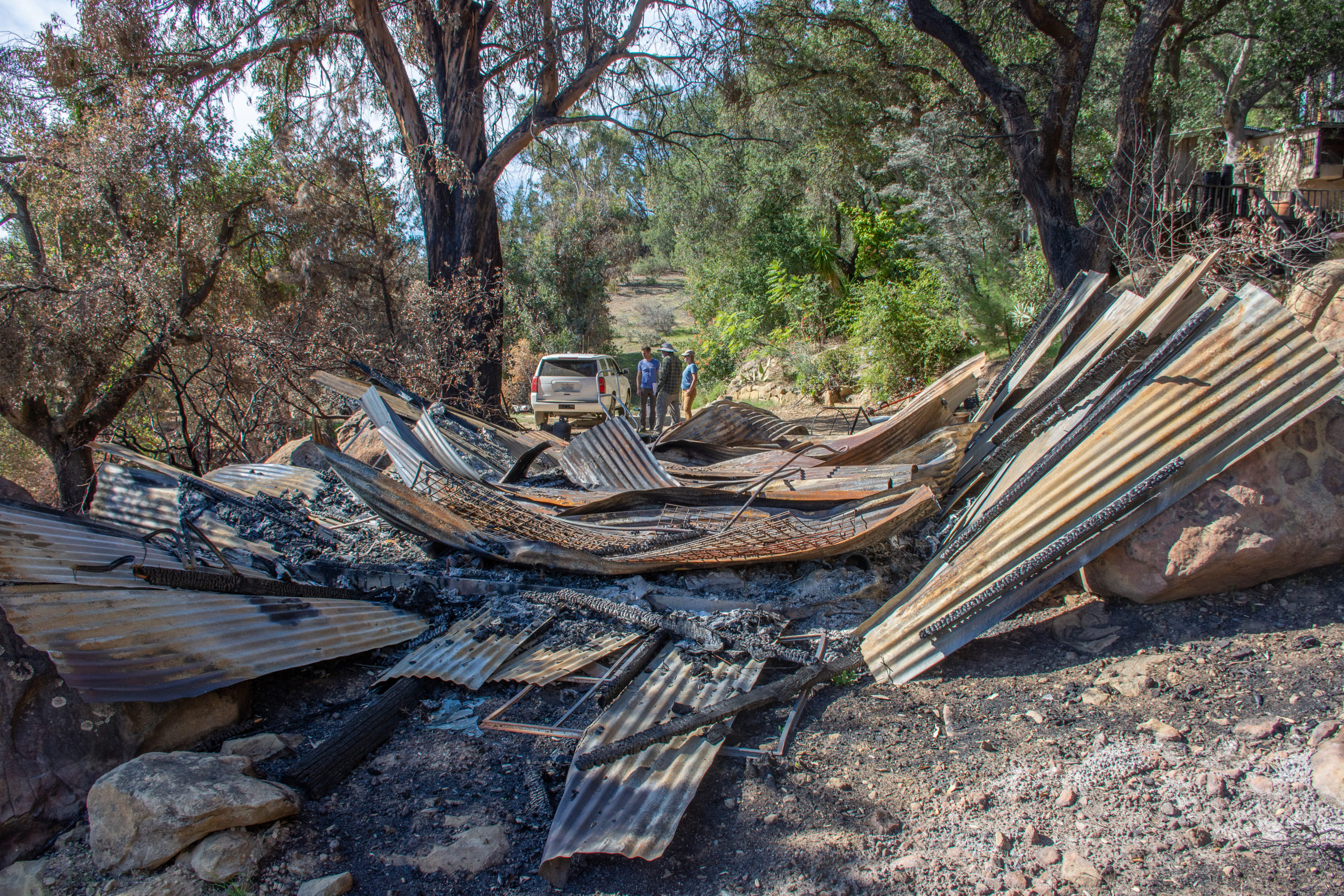
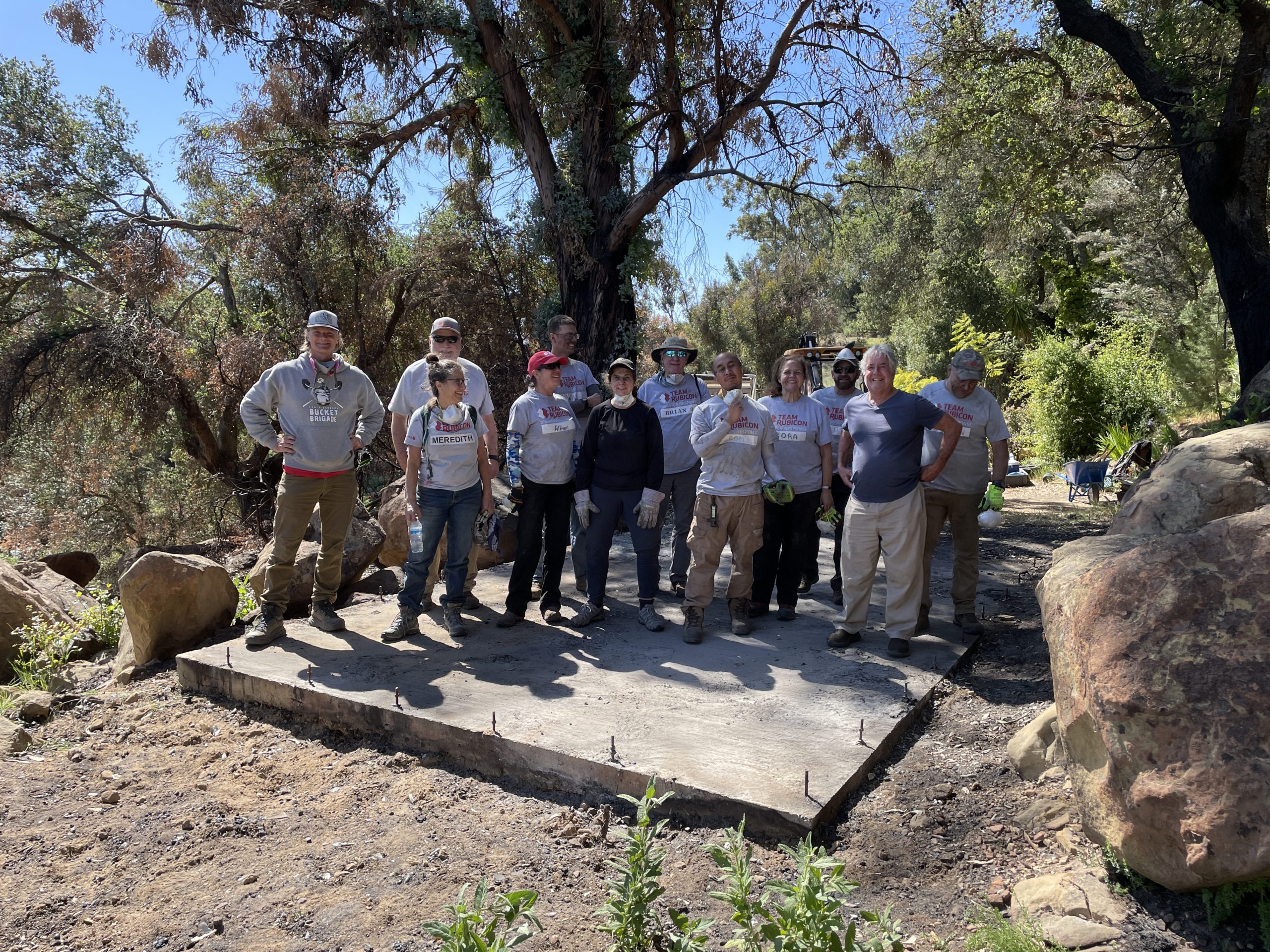
ALISAL FIRE ASSISTANCE FUND SPONSORS:


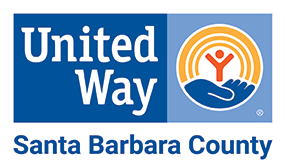
ALISAL FIRE ASSISTANCE PROJECT PARTNERS:
